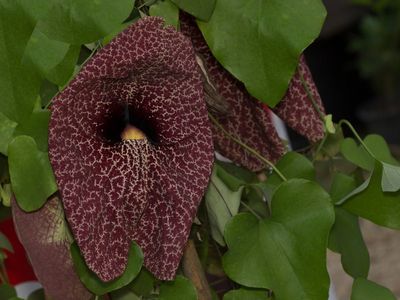Native to Central and South America, giant dutchman’s pipe is a warm climate plant suitable for growing in USDA plant hardiness zones 10 through 12. Giant Dutchman’s pipe plant prefers temperatures 60 F. (16 C.) and above and won’t survive if temperatures fall below 30 F. (-1). Interested in learning how to grow giant Dutchman’s pipe vine? It’s surprisingly easy. Read on for more information on Giant dutchman’s pipe plant.
How to Grow Giant Dutchman’s Pipe
Dutchman’s pipe vine tolerates full sun or partial shade but blooming tends to be more prolific in full sun. The exception is extremely hot climates, where a little afternoon shade is appreciated. Water Dutchman’s pipe vine deeply whenever the soil looks dry. Feed giant Dutchman’s pipe plant once a week, using a dilute solution of a water-soluble fertilizer. Too much fertilizer can decrease blooming. Prune Dutchman’s pipe vine whenever it gets unruly. The vine will rebound, although flowering may be slowed for a short time. Watch for mealybugs and spider mites. Both are easily treated with insecticidal soap spray.
Swallowtail Butterflies and Dutchman’s Pipe Varieties
Dutchman’s pipe vine attracts bees, birds, and butterflies, including swallowtail pipeline butterflies. However, some sources indicate the tropical giant Dutchman’s pipevine may be toxic for some butterfly species. If you’re interested in attracting butterflies to your garden, you may want to consider planting the following Dutchman’s pipe alternatives instead:
Desert pipe vine – suitable for USDA zones 9a and above
White-veined Dutchman’s pipe – zones 7a to 9b
California pipe vine – zones 8a to 10b
